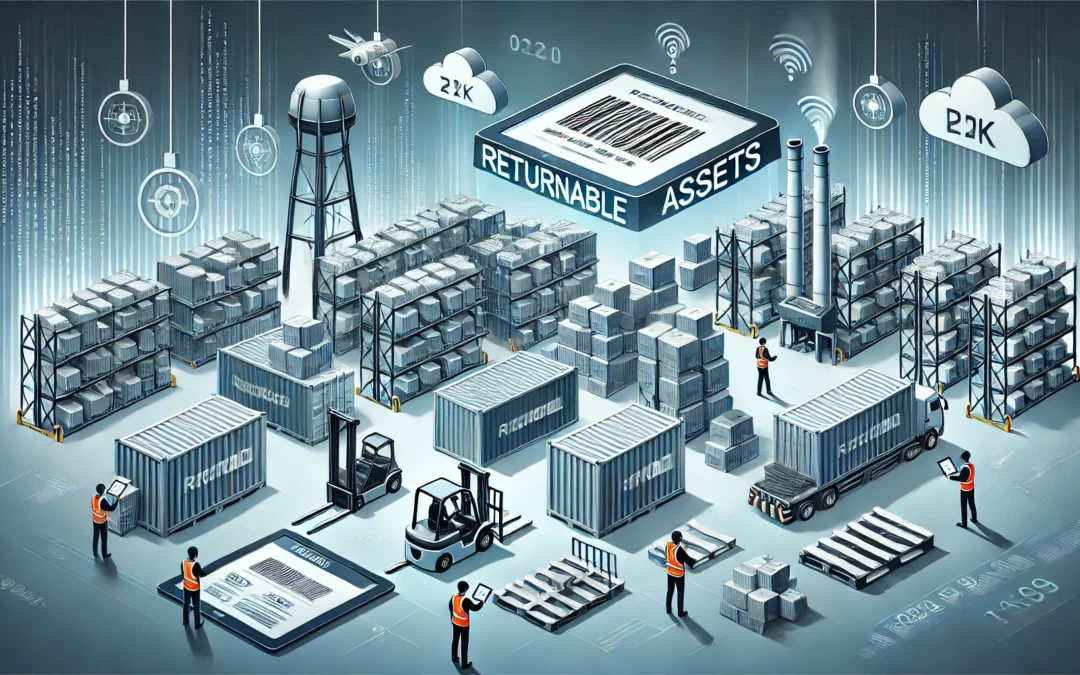Returnable assets play a crucial role in various industries, offering both financial and operational benefits. This blog post delves into the concept of returnable assets, their significance, management strategies, and the benefits they offer to businesses.
What Are Returnable Assets?
Returnable assets, also known as returnable transport items (RTIs), are items used by businesses to transport goods that can be returned for reuse. Common examples include shipping containers, pallets, and racks. These assets are designed for multiple uses, making them more durable and environmentally friendly compared to disposable alternatives. By reducing the need for single-use packaging, returnable assets help companies save money and reduce their environmental footprint.
The Financial Implications of Returnable Assets
From a financial perspective, returnable assets represent a significant investment. They require careful management to ensure they are efficiently utilized and not lost or damaged. The initial cost of acquiring these assets can be substantial, but the long-term savings from reduced packaging costs and improved logistics efficiency often justify the investment.
Asset Financing and Returnable Assets
Asset financing is a method businesses use to obtain loans by pledging their assets as collateral. This type of financing is often employed to cover short-term cash needs, such as purchasing raw materials or paying wages. In the context of returnable assets, companies might use their inventory of pallets or containers as collateral for a loan, thus leveraging their existing assets to secure working capital. This approach can be particularly beneficial for businesses with significant inventories of returnable assets, allowing them to improve liquidity without selling off vital operational resources.
Challenges in Managing Returnable Assets
Effective management of returnable assets involves several challenges:
- Inventory Management: Keeping track of returnable assets is crucial to ensure they are available when needed. Businesses with multiple locations may find this particularly challenging, as assets must be monitored across different sites.
- Real-time Tracking: Knowing the real-time location of returnable assets throughout the supply chain helps prevent loss or damage and ensures assets are returned to the correct location.
- Accurate Record-Keeping: Businesses need to maintain precise records of all returnable assets, including details such as the responsible party and the last usage date. This helps in maintaining accountability and planning for future use.
Returnable Asset Tracking Solutions
To overcome these challenges, many businesses implement returnable asset tracking systems. These systems use various technologies, including RFID tags, BLE beacons, barcodes, and GPS, to monitor the location and status of returnable assets. The benefits of implementing such systems include:
- Reduced Asset Loss: Proper tracking helps locate assets quickly, reducing the time and money spent searching for lost items.
- Increased Efficiency: Knowing the exact location of assets ensures they are utilized effectively, improving overall operational productivity.
- Sustainability: Tracking systems can reduce waste by minimizing losses and optimizing asset use, contributing to a lower carbon footprint.
- Cost Savings: Avoiding the need to replace lost or stolen assets results in significant cost savings over time.
- Enhanced Security: Tracking systems can limit asset access to authorized personnel only, preventing theft and unauthorized usage.
- Optimized Maintenance: Businesses can schedule maintenance and repairs more effectively when they know the exact status and location of their assets.
- Regulatory Compliance: Accurate tracking ensures that assets are used in compliance with regulations, simplifying audits and investigations.
The Broader Financial Context: Return on Assets (ROA)
In the broader financial context, understanding how efficiently a company uses its assets to generate profit is crucial. This is where the concept of Return on Assets (ROA) comes into play. ROA is a financial ratio that indicates how profitable a company is relative to its total assets. It is calculated by dividing net income by total assets. A higher ROA signifies more efficient use of assets to generate profits.
For businesses relying heavily on returnable assets, maintaining a high ROA requires efficient asset management and tracking. By effectively utilizing returnable assets, companies can improve their overall profitability and operational efficiency.
Also Read: Generational Wealth Illustration for Americans – A Guide
Conclusion
Returnable assets are a vital component of many businesses, offering substantial financial and operational benefits. Effective management and tracking of these assets are essential to maximize their value and ensure sustainability. Implementing robust returnable asset tracking systems can help businesses reduce losses, improve efficiency, and achieve significant cost savings. By leveraging technologies such as RFID and GPS, companies can enhance their asset management practices, contributing to better financial performance and a more sustainable operational model.
Understanding and managing returnable assets effectively can significantly impact a company’s bottom line, making it a critical area of focus for businesses aiming to optimize their resources and improve their financial health.

